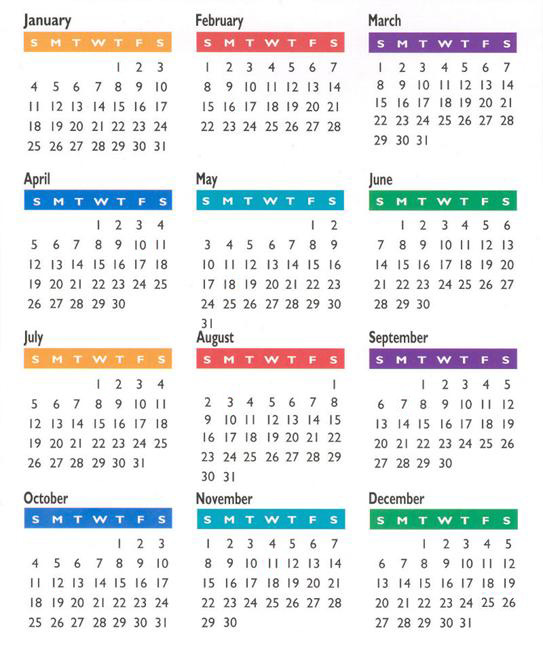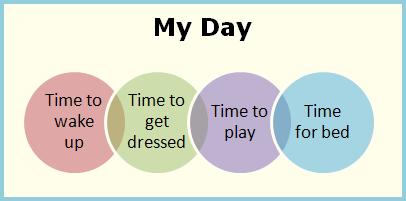In this course, students will learn about people working together through their study of history, geography, government and economics. Along with their continuing practice of social studies skills and methods, students use biographies of people whose work has made a difference and artifacts as clues to the past. They begin to understand various cultures and the impact of the environment on how people live, work and use their resources. Students build a framework necessary for collaboration and leadership that strengthens their abilities to work with others.
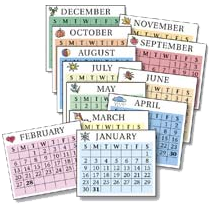

Unit Overview
In this unit, you will study the calendar. You will
see that the calendar measures time by days, weeks, months and years. Later you
will have some fun learning about time lines, and you will even get to make one
to send to your virtual learning teacher. Have a good time with this unit!
Using the Calendar to Count Days
Calendars are orderly plans that fit days into weeks
and weeks into months and months into years.
Days in a Month
Let’s take a look at a calendar for the month of
May.
Do you see the days on the calendar? Each day is
represented by a number. Count the number of days beginning with the first
number and ending with the last number.
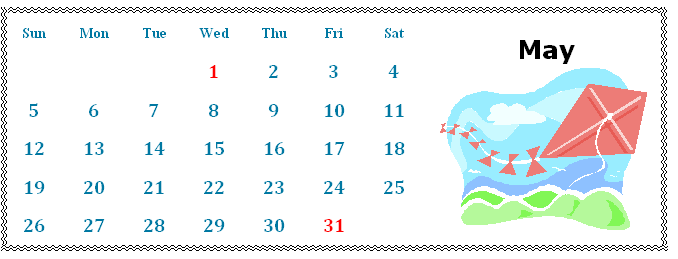
May has 31 days.
"Click here" to check the answer.
Days in a Week

Look at the calendar again. The first week in May
begins on May 5, Sunday, and ends on May 11, Saturday. (Notice that just the
first three letters of the word for each day in the calendar is shown.) Count
the number of days in the week beginning on May 5 and ending on May 11.
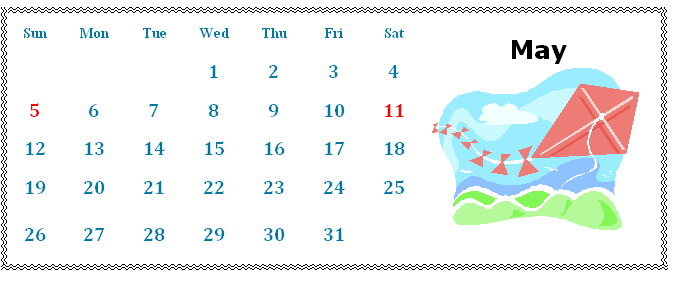
 How many days
are in a week?
How many days
are in a week?
There are seven days in a week.
"Click here" to check the answer.
Weeks in a Month
It is more difficult to see how many weeks are in May, but let’s try. Look at the calendar again. A whole week begins with Sunday and ends with Saturday. Count the number of whole weeks. (Hint: Each whole week is shaded with a different color.)
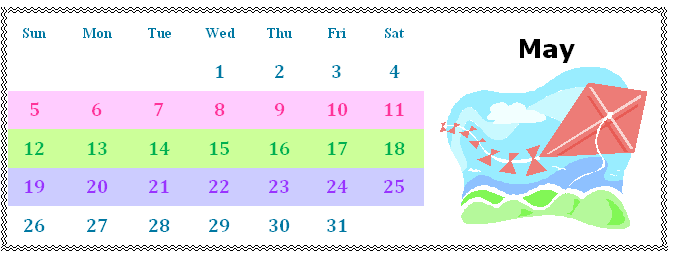
![]() How
many whole weeks do you see in this month of May?
How
many whole weeks do you see in this month of May?
There are three whole weeks.
"Click here" to check the answer.
Now consider the days that are left over and not part of a whole week. Count the number of days that are not part of a whole week. (Hint: They are the days that are highlighted in blue.)
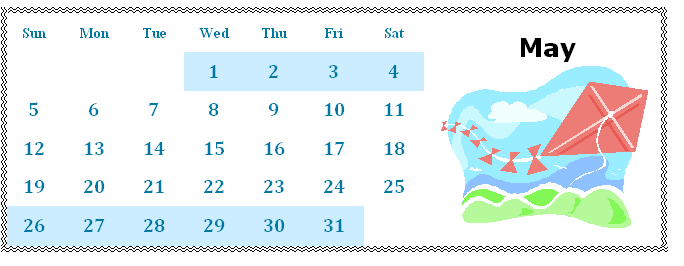
![]() How many days in May are left over and not part of a whole week?
How many days in May are left over and not part of a whole week?
Ten days are left.
"Click here" to check the answer.
If you counted, Ten, you are correct. Let’s think about the 10 days that are left over.
Remember: 1 week = 7 days Remember: 7 + 3 = 10
Ten days is the same as one week and three days because 7 days (1 week) + 3 days = 10 days.
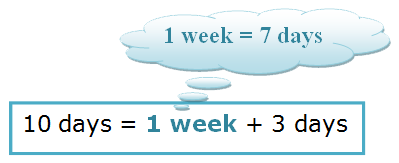
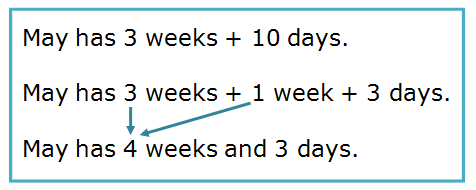
In fact, it is safe to say that all months have at least four weeks.

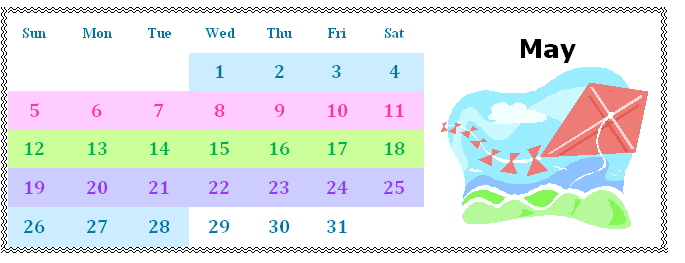
May has 4 weeks and 3 days.
"Click here" to check the answer.
Using the Calendar to Count Months
So far, we have talked about how many days there are in a week. Remember, there are seven.
We have discovered how many weeks there are in a month. Remember, there are four weeks and sometimes a few days left over.
Now, we need to find how many months are in a year.
Look at the calendar that shows an entire year.
